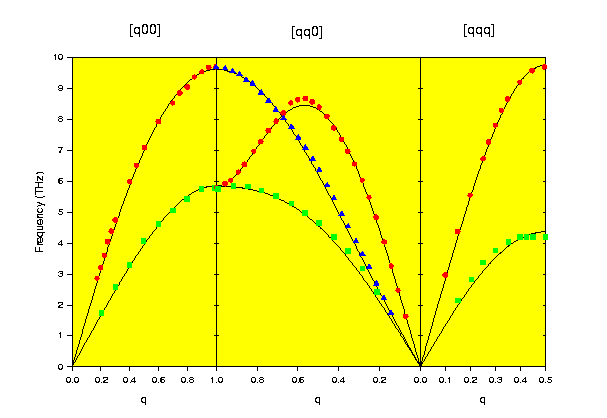
Background
My research is aimed at identifying structure-bonding relationships and understanding the factors which link the structures, dynamics, and physical and chemical properties of solid materials and their surfaces. Theoretical methods enable the calculation of the properties of materials under conditions which are not easily available experimentally. One of the goals of this work is to use the understanding obtained by studying known solids to predict new materials with desired physical and chemical properties.
Simulation of Elemental Solids: I have been heavily involved in the development of a new type of many-body potential energy function which has proved successful in describing and simulating the structures, dynamics and phase transitions of elemental solids, ranging from semiconductors (e.g. Si) to simple metals (e.g. the alkali metals and Al) and transition metals (e.g. Fe, Mo).

Figure: Comparison of calculated and experimental phonon frequencies for fcc Al
Modelling Metal Surfaces: The surfaces of metals are of great interest due to their importance in heterogeneous catalysis. Using potential energy functions derived for bulk solids, we have been studying reconstructions of clean metal surfaces and simulating the surface melting of Al and Mo.